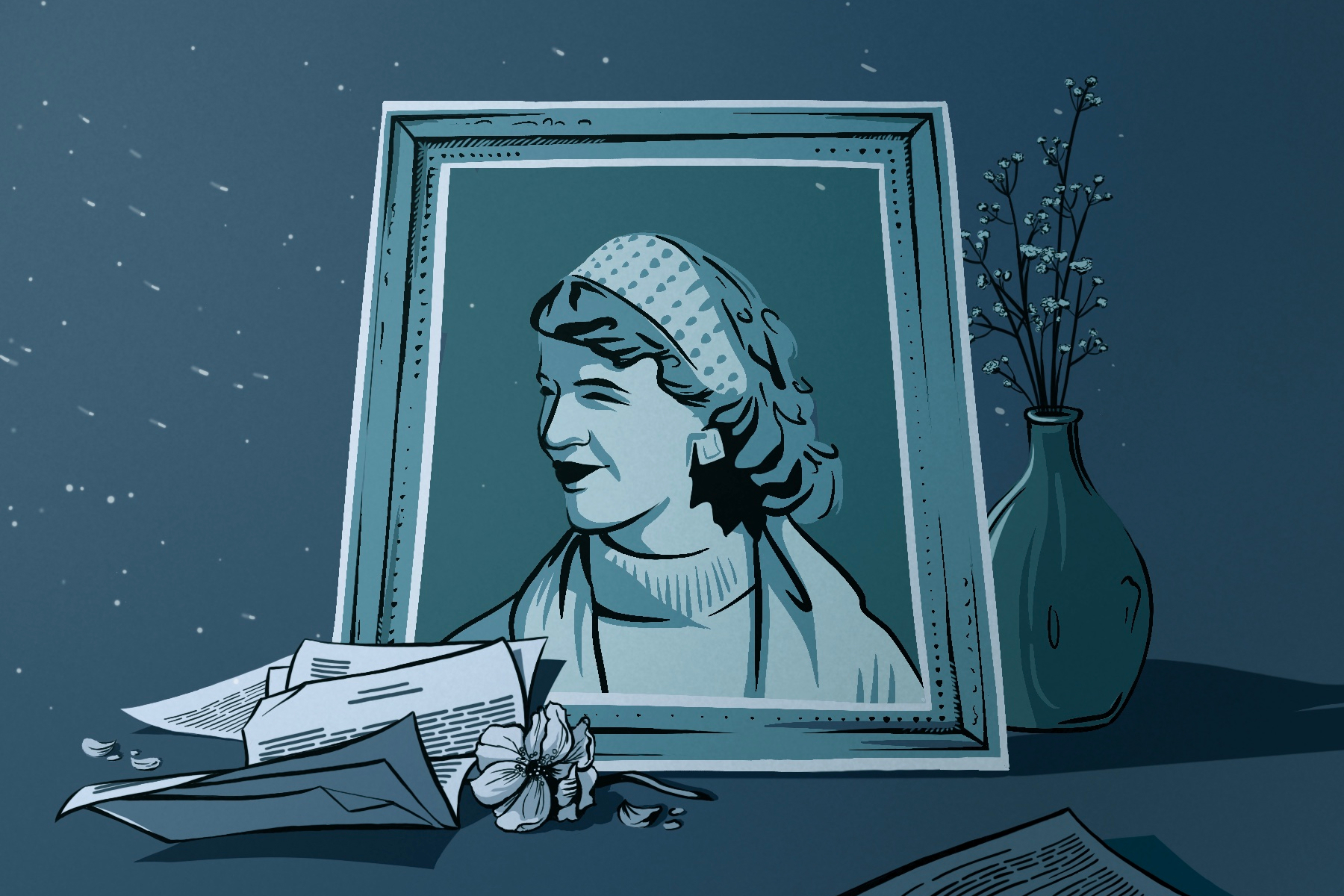“Art comes from joy and pain… but mostly from pain.” Famous painter Edvard Munch lived by these words. He is remembered as an artist for famous pieces like “The Scream,” but he’s also remembered for a severe mental breakdown and a lifelong struggle with depression.
Munch is one in an expansive history of artists closely associated with their sadness. Though Munch’s internal turmoil wasn’t the cause of his eventual death, the same can’t be said for many of his counterparts. The concept of the tortured artist is intensely pervasive, and it’s equally as dangerous.
The Tortured Artist Myth
The concept of the tortured artist refers to the idea that creative geniuses tend to exist in a constant state of torment. However, it’s that torment that enriches their art and proliferates their creativity. According to this ideal, being a great mind — or even “A Beautiful Mind” — requires suffering.
There are countless artists whose lives feed this notion. Sylvia Plath was an influential feminist poet who took her own life just a month after the release of her sole novel, “The Bell Jar,” which drew inspiration from her experience with depression. Vincent van Gogh, the revolutionary post-impressionist, sold only one piece of art before his suicide. Kurt Cobain’s anti-establishment songwriting for Nirvana changed the scope of rock music, but his life, too, was cut short.
Though these figures exemplify the trope in real life, movies like “Black Swan” and “Whiplash” show its perpetuation in media. The former tells the story of Nina Sayers, a troubled dancer obsessed with perfecting her role as the Swan Queen in “Swan Lake.” Nina’s sanity and sense of reality slip until she is finally able to perform the part perfectly, though it only comes after she has lost everything.
“Whiplash” employs a similar philosophy. Dedicated drummer Andrew Nieman joins a highly competitive concert band with an infamous instructor named Fletcher, who is determined to breed greatness at any cost. Fletcher verbally and physically abuses his students, summing up his teaching method by saying, “There are no two words in the English language more harmful than ‘good job.’”
In the end, Andrew agrees. At a meal with his family, he says, “I’d rather die drunk, broke at 34 and have people at a dinner table talk about me than live to be rich and sober at 90 and nobody remember who I was.” The message is clear: Greatness must be achieved at the expense of all else. Fletcher’s methods are justified by the ends they seek to bring about. If he can create the next Charlie Parker by throwing a cymbal at a student’s head, then it’s his responsibility to do so.
The Science of Creativity
Many studies have been completed investigating the connection between creativity and mental illness. Those most often cited, like that of Kay Redfield Jamison, have been criticized for unrepresentative samples and inconsistent methodologies.
In contrast, a well-regarded Swedish population study encompassing 40 years of data concluded that, aside from bipolar disorder (which had a relatively small effect of 8%), those in artistic occupations are not more likely to suffer from psychiatric disorders.
When considering the idea of the tortured artist, it’s important to unpack what it’s actually implying. Though traditionally thought of as being confined to the right side of the brain, the creative process employs both sides. Creativity involves three major brain networks: the executive attention network, the imagination network and the salience network.
In conjunction, mental illness largely inhibits brain functioning. Neurotransmitters are likely to be found in more limited quantities. Mood is changed, concentration is affected and anxiety is processed differently. These byproducts are more than just aesthetic sadness, able to be filtered through poetic introspection and a paintbrush dipped in deep blues, as the stereotype might have you believe. They are debilitating and life-altering problems that must be addressed.
Yet the ideal of the tortured artist implies that these side effects are the ticket to artistic genius. By that logic, they must also promote productivity, imagination, focused sensory processing and memory, right? Of course, the opposite is true.
In reality, most tortured artists can really only be understood through retroactive diagnosis. Edgar Allan Poe’s poems and diary entries might point to signs of bipolar disorder, but there’s no telling how he might actually be evaluated by a contemporary psychiatrist. Poe lived a sad life filled with substance abuse and poverty, and the strange circumstances of his death don’t make a puzzle to be solved — they just make a tragedy.
Romanticizing Suffering
The 27 Club has become something of a cultural phenomenon. In summation, it’s a group of famous artists and musicians who all died at the age of 27. The list is far too long and includes names like Cobain, Janis Joplin, Jimi Hendrix, Jim Morrison and Amy Winehouse. The 27 Club has been the source of speculation and conspiracy theories since its inception, but that’s really just a distraction from the core of the issue.
Artists are dying young. In fact, it seems like they always have. Perhaps it’s time to take a look at why artists are suffering, as opposed to why the suffering become artists. It’s apparent that maintaining a profession as a creative is no easy feat; there’s a reason so many “struggling artists” spend their entire lives waiting to be discovered.
Making art out of pain is far too familiar a phrase. It’s something I’ve been told for many years, and it’s something I’ve told myself in times of distress. After all, it’s comforting to believe that your pain and heartbreak carry some deeper meaning. You want to believe that it’s not for nothing.
Pain does have a purpose. It helps you learn and grow. However, it doesn’t make you more interesting or complex, and it certainly doesn’t make you more likely to be remembered as a great artist. I’m not saying mental illness is a weakness, because it’s definitely not, but it isn’t something to be celebrated. Instead, it should be directly addressed and treated as completely as possible.
The tortured artist trope romanticizes suffering and treats it as a conduit to a higher form of creativity. It encourages burnout and unhealthy coping mechanisms that hinder artists far more than helping them. Art should be an act of beautiful creation, not some misguided attempt to revel in agony.
It’s not poignant that Plath’s life imitated her art; it’s tragic that her mental anguish robbed the world of both her art and her life. That tragedy should inspire efforts, such as more comprehensive mental health education, to ensure nothing like it happens again. The myth of the tortured artist should be treated less as an unavoidable consequence and more as a call to action.


















This article kind of makes it sound like mental illness can be cured and these artists will have better lives if that happens. Mental illness isn’t cured. There’s treatment to make it easier to live with, but a lot of things never completely go away. People can get all the help possible and still struggle to survive. As a disabled mentally ill artist, turning my pain into something beautiful is therapeutic. I use my experiences and growth to help others and turning the pain into beauty is a big thing I recommend. Art quality is subjective. It doesn’t have to be popular or technically well-done to be beautiful. I teach that the expression in itself is beautiful and I believe that. Art that everyone except one person hates can still be beautiful. But this is the first Google result when you search “tortured artist” so a lot of these people will read this and maybe doubt the beauty of their expression or give up one of the few things that can help them. I understand that this is about people not seeking help in order to protect their creativity. Which obviously isn’t good. But there’s a very positive side, too, that’s equally as important for people to know, in my opinion.
This post really resonates with me. The myth of the tortured artist often overshadows the diverse experiences of creativity. It’s refreshing to see a discussion challenging this stereotype and recognizing that mental health struggles shouldn’t be romanticized. We need to celebrate artists for their talents, not their traumas. Thank you for shedding light on this important issue!
This post really resonated with me. The idea that suffering is a requirement for creativity creates such a toxic narrative, both for artists and for society. It’s refreshing to see someone challenge this stereotype and advocate for a healthier, more balanced approach to creativity. Thanks for shedding light on this important issue!
This post truly resonates with me. The idea that suffering is a prerequisite for creativity is so damaging. As artists, we should be encouraged to find joy and fulfillment in our work rather than feel pressured to conform to this stereotype. Thank you for shedding light on this important issue!
This post really resonated with me! The stereotype of the tortured artist often romanticizes suffering and overlooks the importance of mental health. It’s crucial to recognize that creativity doesn’t have to come from pain, and we need to support artists in healthier ways. Thanks for shedding light on this important issue!